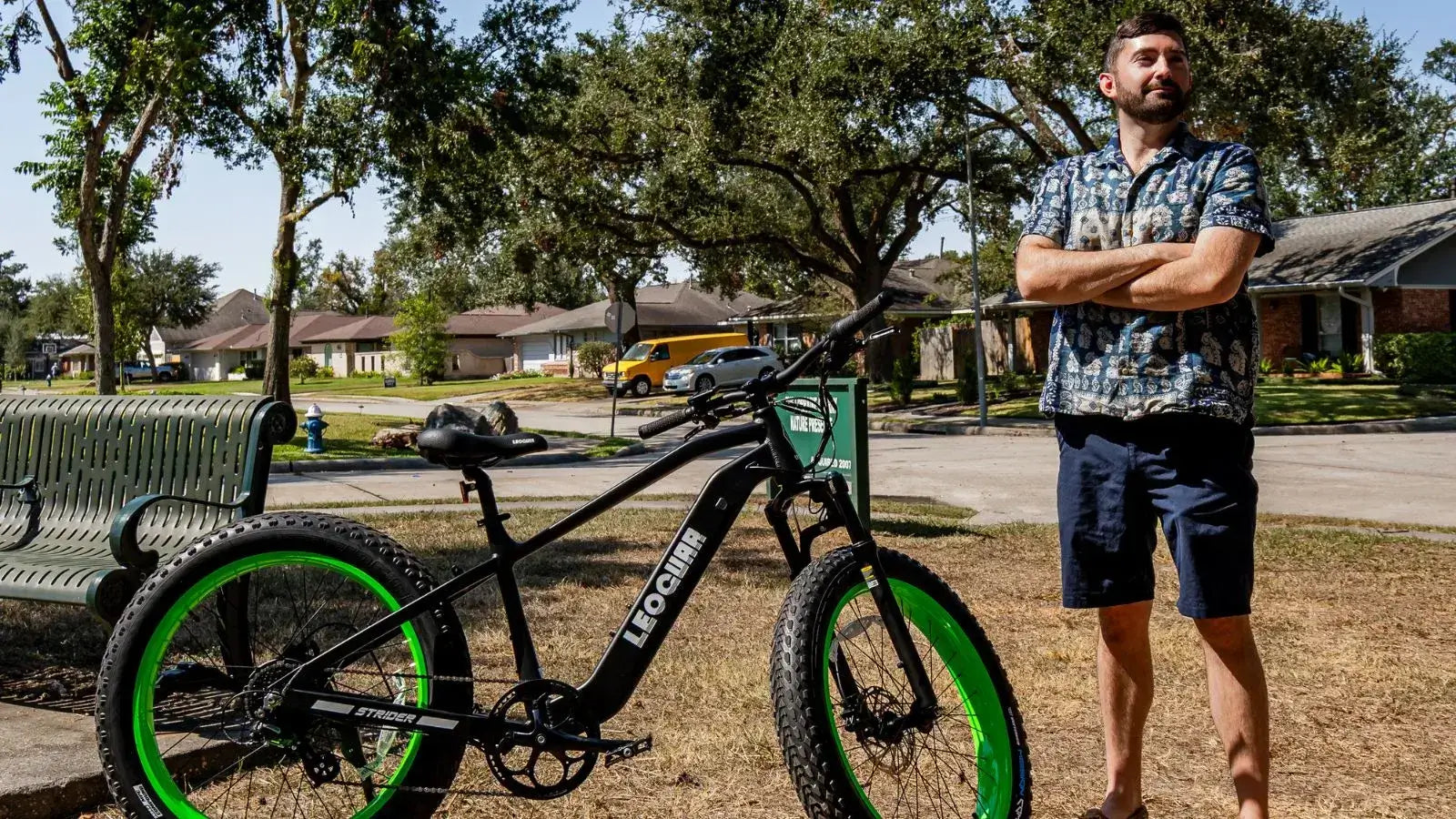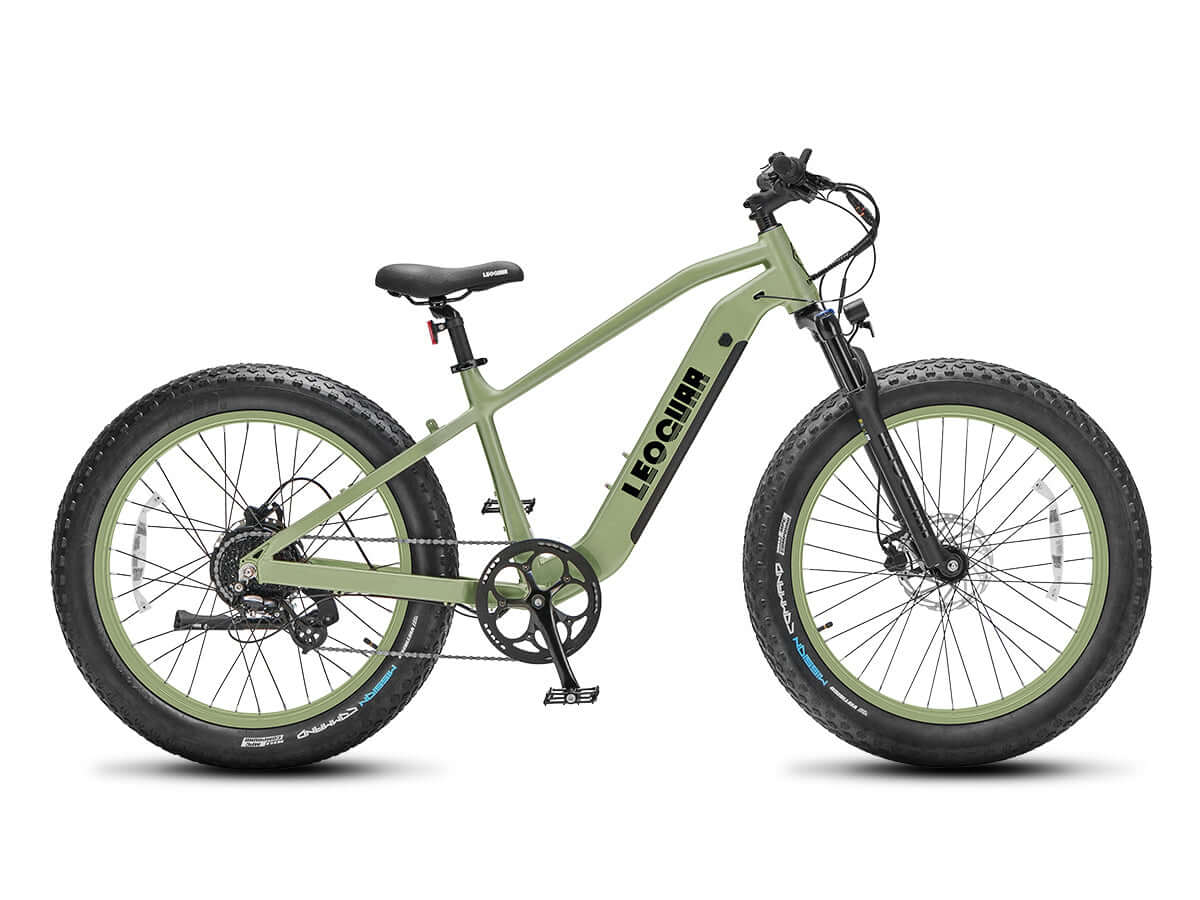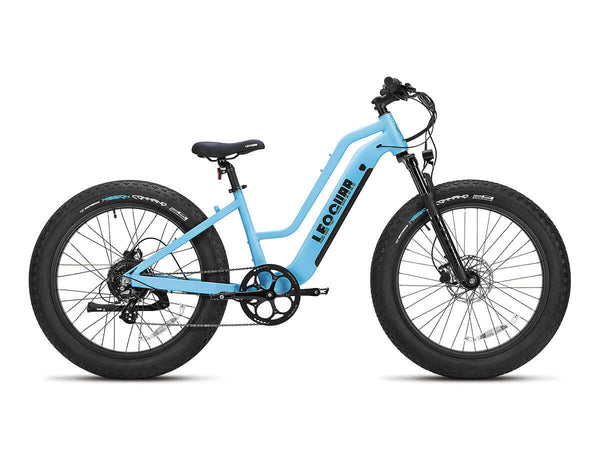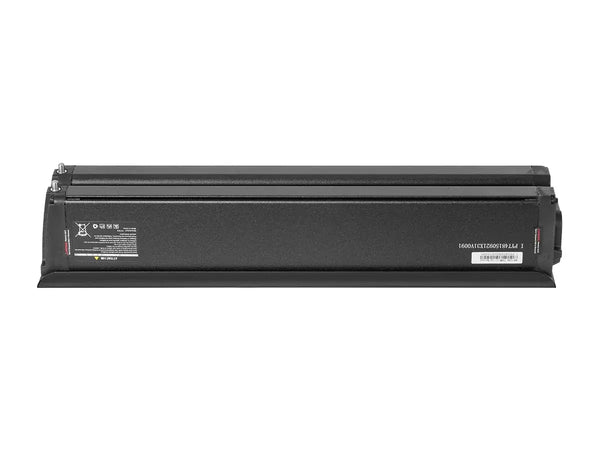
Best 750 Watt Electric Bikes 2025: Ultimate Buyer's Guide
Is 750W Right For You?
If you're looking at electric bikes, you've probably seen the 750-watt motor option. There's a good reason this power level is so popular among riders of all types. A 750 watt electric bike is often called the "sweet spot" in the e-bike world. It gives you a big step up in power from basic motors without getting into the legal problems of higher-powered, off-road-only bikes.
This power level works great for many different riders. It's perfect for commuters who need strong power to climb hills, keep up with traffic, or carry groceries without getting tired. Heavier riders over 200 lbs will love the reliable acceleration and climbing power that a 500w motor might not provide. Recreational riders get a fun, zippy experience on bike paths, gravel roads, and different types of terrain. Anyone looking for a good balance between exciting power, practical battery life, and legal compliance will find what they need.
This guide will go beyond just the "750w" number. We'll look at what that power means in real riding situations and explore other important parts like torque, sensors, and battery technology that make a truly great ride.
Understanding 750 Watts
The 750W number on an e-bike shows its nominal power rating. This is the steady power output the motor can keep going without getting too hot. Think of it as a baseline for both performance and, in many places like the United States, a legal standard. It's a key part of what defines the three e-bike classifications used in the U.S.
Real-World Performance
What does this 750W rating actually mean when you're riding?
Most 750 watt electric bikes are legally classified as Class 2 (throttle-assisted to 20 mph) or Class 3 (pedal-assisted to 28 mph). With a Class 3 bike, you can comfortably cruise between 20-28 mph (32-45 km/h), making it a real car replacement for many city trips. This is where 750 watts really stands out in hill climbing. Compared to a 500w motor, a 750w system gives you a big boost in hill-climbing ability. It turns steep hills from scary challenges into manageable climbs, especially for riders carrying cargo or those with higher body weight. You'll stay in the saddle on hills you'd otherwise have to walk up.
750W vs. Other Motors
Putting 750w in context helps show its position in the market. It's the powerful middle ground that works for most riders.
| Power Level | Best For | Key Consideration |
|---|---|---|
| 500W | Flat terrain, lighter riders, maximizing range. | Excellent efficiency, but can struggle on steep hills. |
| 750W | All-around use, daily commuting, hills, heavier riders. | The ideal balance of power, legality, and efficiency. |
| 1000W+ | Off-road only, extreme performance, heavy cargo. | Often legally restricted, heavier, and drains battery faster. |
Beyond Watts: True Performance
The wattage number is just the start of the story. Two 750w e-bikes can feel completely different to ride. To be a smart buyer, you need to look at the specs that truly define performance and ride quality. These details separate a good e-bike from a great one.
Torque: The Secret to Acceleration
While watts relate to top speed, torque (measured in Newton-meters or Nm) is the turning force that gets you moving from a stop and pushes you up hills. It's the "grunt" of the motor. A simple comparison is horsepower vs. torque in a car; horsepower gets you to high speed, but torque is what pulls a heavy load.
For a 750 watt electric bike, you should look for a motor that delivers at least 60-85Nm of torque for a responsive and capable feel. High-performance models, especially those designed for trails or heavy cargo, can exceed 100Nm, giving you exciting acceleration and mountain-climbing power.
Peak Power vs. Nominal Power
The 750w rating is the nominal (steady) power. However, most of these motors can deliver higher peak power (often 1000W or more) for short bursts. This peak output is what you feel when you hit the throttle for a quick start at a traffic light or need extra power to get over a hill. When comparing bikes, higher peak wattage often means a more robust and powerful-feeling motor, a fact that independent dyno tests often show.
Sensor Technology: The Brains
The sensor is the part that tells the motor when and how much power to deliver. This is probably the single most important factor in determining how an e-bike "feels." There are two main types.
Cadence Sensor: This is the simpler of the two systems. It works like an on/off switch; as soon as it detects that the pedals are turning, it tells the motor to deliver a pre-set level of power. This can sometimes feel jerky or sudden, like a quick push. It's effective and common on more budget-friendly 750w e-bikes.
Torque Sensor: This technology is much more advanced and intuitive. It measures how hard you are pedaling and matches the motor's output in real-time. Pedaling lightly gives gentle help; pushing harder on the pedals releases more power. The result is a seamless, smooth, and natural riding experience that feels like you have super-strong legs. With a torque sensor, the bike feels like part of your body, giving power that is perfectly matched with your own effort. This makes moving at low speeds, going through tight spaces, and climbing technical hills much easier and more natural.
Finding Your E-Bike Type
A 750w motor can be found in almost every style of e-bike. The key is to match the bike's features to your main lifestyle and riding needs. Instead of a general list, this framework helps you identify the best category for you.
For the Daily Commuter
Your focus is reliability, comfort, and usefulness for getting from point A to point B. You need a workhorse that can handle daily use in various conditions.
Key Features: Look for built-in front and rear lights, pre-installed fenders to keep you dry, and a strong rear rack for panniers or a basket. An upright, comfortable riding position reduces strain on your back and neck. Puncture-resistant tires are a huge bonus, saving you from annoying roadside flats.
For the Off-Road Adventurer
You love trails, dirt paths, and exploring beyond the pavement. Your bike must be tough, capable, and confidence-inspiring on rough terrain.
Key Features: A quality suspension fork is essential to absorb bumps and improve control. For more aggressive trail riding, full suspension (front and rear) is ideal. Wide, knobby fat tires (4 inches or wider) provide excellent grip and cushioning. Look for powerful hydraulic disc brakes, as they offer superior stopping power and control in wet and muddy conditions.
For the Urban Dweller
You value convenience, portability, and space-saving design. Your bike needs to fit into a life that includes apartments, public transit, and car trunks.
Key Features: A folding frame is the main feature. Check the bike's folded size and weight to make sure it fits your space and you can lift it. A 750w motor on a folding bike provides zippy performance that makes it incredibly fun for city errands. Many folding models also come with fat tires, adding comfort on rough city streets.
For the Comfort Cruiser
Your priority is a relaxed, enjoyable, and stylish ride. You want to cruise bike paths, boardwalks, and neighborhood streets in maximum comfort.
Key Features: A step-through frame makes getting on and off the bike easy. Look for a wide, cushioned seat, swept-back handlebars that promote an upright posture, and often large-volume "balloon" tires that smooth out the ride. These bikes are about the journey, not just the destination.

The Battery Equation
The motor provides the power, but the battery determines how far you can go. Understanding the basics of e-bike batteries is important for avoiding range worry and ensuring long-term reliability. The key number for a battery is its capacity, measured in Watt-hours (Wh). This is the "size of the gas tank." You can easily calculate it if it's not listed directly.
Volts (V) x Amp-hours (Ah) = Watt-hours (Wh)
A typical 750w electric bike will come with a 48V battery. A common battery size is 48V and 15Ah, which equals 720Wh. A larger Wh number means more range. For a 750w bike, we recommend a battery of at least 650Wh to ensure a practical and useful range.
However, manufacturer-claimed range can be too optimistic. Real-world range is affected by rider weight and cargo, hills and terrain, wind resistance, tire pressure, and your level of pedal assist or throttle use.
Beyond capacity, look for batteries that use cells from trusted brands (like Samsung, LG, or Panasonic) and, most importantly, have a UL 2849 or UL 2271 certification. This is a critical safety standard that tests the battery and electronics system for fire safety, giving you essential peace of mind.
Your Final Checklist
Choosing the right 750 watt electric bike comes down to matching its specs to your needs. As you compare models, use this final checklist to make a confident and informed decision.
- Motor Performance: Does it have enough torque (aim for 65Nm+)? Does the peak power provide the acceleration you want?
- Sensor Type: Do you prefer the natural feel of a torque sensor or the simple power delivery of a cadence sensor? Try to test ride both if possible.
- Bike Style: Does the frame style (commuter, fat tire, folding, cruiser) match your primary use case and lifestyle?
- Battery Specs: Is the capacity (Wh) large enough for your typical rides? Is the battery UL-certified for safety and reliability?
- Components: Are the brakes hydraulic for better stopping power? Does it include essential accessories like lights, fenders, and a rack?
- Budget and Brand: Does the bike fit your budget while coming from a brand known for good customer support and warranty service?
Frequently Asked Questions
1. Q: Is a 750w e-bike legal to ride on public roads?
A: Yes, 750w e-bikes are legal in most U.S. states when classified as Class 2 or Class 3 e-bikes. However, local laws may vary, so check your area's specific regulations before riding.
2. Q: How far can I ride on a single charge with a 750w e-bike?
A: Range typically varies from 20-50 miles depending on battery capacity, terrain, rider weight, assist level, and weather conditions. A 650Wh+ battery will give you the best practical range.
3. Q: Do I need a license or registration for a 750w e-bike?
A: In most U.S. states, no license or registration is required for 750w e-bikes that meet Class 1, 2, or 3 specifications. Some states may require helmets or have age restrictions.
4. Q: Can a 750w e-bike handle steep hills with a heavy rider?
A: Yes, a 750w motor with good torque (65Nm+) can handle steep hills even with heavier riders or cargo. It provides significantly better hill-climbing performance than 500w motors.
5. Q: What's the difference between peak power and nominal power on a 750w e-bike?
A: Nominal power (750w) is the steady output the motor can maintain continuously. Peak power is the short burst of higher power (often 1000w+) for acceleration and climbing, giving you extra performance when needed.










































Leave a comment